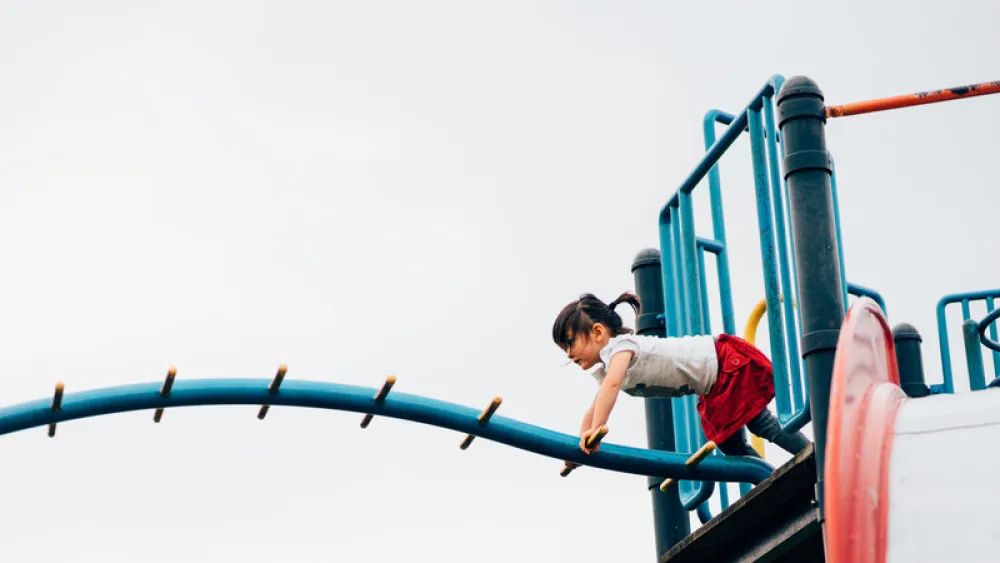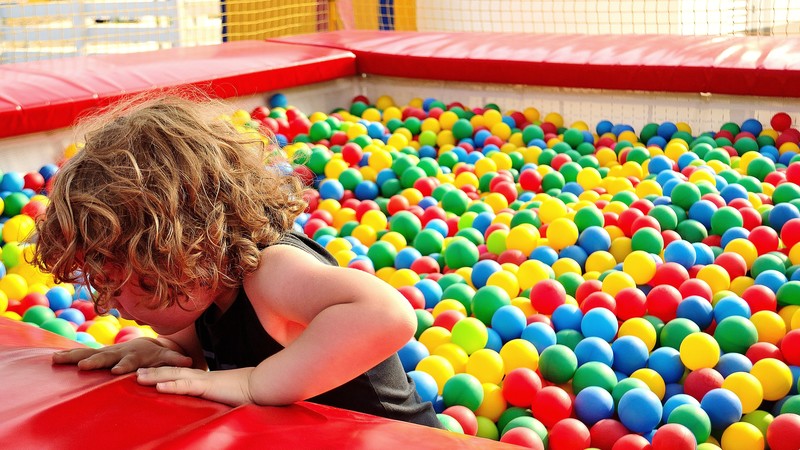




Family Health
Play it Safe for Playground Fun
Published: May 21, 2019

Omaha is lucky to have many playgrounds.
They're a great way to get fresh air and exercise, but they’re not without danger.
More than 200,000 children are treated in hospital emergency rooms each year for injuries sustained on playgrounds. And almost half of all playground accidents result in an emergency room visit.
Here are some guidelines to keep in mind the next time you head to the park.
Put your phone down
Watch your children as they play. Better yet? Play with your children. Kids may not always be able to gauge distances or understand the danger of an activity. Older kids like to test their limits. For you, the parent, be mindful of distractions, whether it’s your cell phone or a conversation with a friend.
Choose sand over cement
Falls are responsible for the majority of playground-related injuries. Seek out playgrounds with impact-absorbing surfaces such as rubber, synthetic turf, sand, pea gravel, wood chips or mulch. If you’re building a play area at home, install at least 9 inches of soft surface material to cushion falls.
Scope out the scene
Give the playground a once-over for hazards like rusted or broken equipment. The playground should be free of debris, rocks or tree roots that could cause a trip or fall. Also keep an eye out for dangerous materials like broken glass, rough wood or sharp metal – especially in sandboxes. And remember the weather can have a real effect on equipment. For example, hot equipment can burn a child’s skin. Wet equipment can lead to slips and falls.
Think age-appropriately
Try to keep older and younger children separate so that older ones can’t unintentionally injure a smaller child. Babies learning to walk should be placed on smooth, easy-to-walk-on surfaces. If your baby has good head control and can sit up with support, you can try the bucket-shaped baby swings.

Double-check and inspect
Guardrails and protective barriers should be in place and secure for raised platform surfaces. Check equipment with moving parts – like seesaws and merry-go-rounds – for areas that could pinch a child’s fingers or hands.
Same goes for indoor playgrounds, like the ones at some fast-food restaurants.
Check for torn netting and frayed rope, and be aware of who else may be in a ball pit, especially ones at the base of a slide.
Dress the part
Take off jewelry, purses, backpacks, scarves and other clothing that could get caught on equipment and be a strangulation hazard.
Lead by example
Teach children that pushing and shoving while on the playground can be dangerous. Stress things like:
- Slide feet first
- Stand back from swings or seesaws when others are on them
- Limit the number of kids on a swing or seesaw
- Be aware of your surroundings, like children jumping off a piece of equipment
Walk, don’t run
This is especially true at splash parks, which are often slick and built without a cushioned surface. Be sure your child wears water shoes or footwear with non-skid soles to help with traction.
Imagination, exercise and fresh air
Playing on a playground is one of the real joys of childhood. With these guidelines in mind, I hope your children have many happy memories of outdoor play – with your encouragement.
More Resources
- Test your sunscreen IQ with this quiz
- After a day of play, good sleep is important. Check out these tips


